Posted on May 29th, 2013 by ASEE
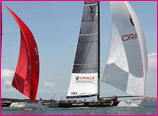 The United States won the 33rd America’s Cup with a design that got a boost from aeronautical engineering. The wing sail of BMW Oracle Racing’s BOR 90 is essentially an oversized airplane wing. At 190 feet tall, it’s the largest sail ever used on a boat.
The United States won the 33rd America’s Cup with a design that got a boost from aeronautical engineering. The wing sail of BMW Oracle Racing’s BOR 90 is essentially an oversized airplane wing. At 190 feet tall, it’s the largest sail ever used on a boat.
Read More
Filed under: Special Features | Comments Off on Aerospace Inspires Winning Yacht Design
Tags: Aerospace Engineering, America's Cup, boat design, catamaran, Marine engineering, sailboat, yacht
Posted on May 25th, 2013 by Mary Lord
 In this activity, students in grades 6 to 8 learn about the engineering design process and the physical principles of buoyancy by working together to build a boat out of straws and plastic wrap that can hold 25 pennies for at least 10 seconds before sinking.
In this activity, students in grades 6 to 8 learn about the engineering design process and the physical principles of buoyancy by working together to build a boat out of straws and plastic wrap that can hold 25 pennies for at least 10 seconds before sinking.
Read More
Filed under: Class Activities, Grades 6-8, Grades 6-8, Grades K-5, Grades K-5, Lesson Plans | Comments Off on Watercraft
Tags: boats, buoyancy, flotation, forces, Marine engineering, ocean engineering, sailboat
Posted on May 8th, 2011 by ASEE
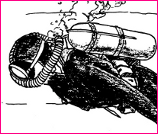 Scuba diving is an excellent hobby for underwater naturalists. In this lesson, students in grades 6-8 learn about the concepts of buoyancy and how organisms float, sink, or hover in water as they construct a neutrally buoyant “scuba diver.”
Scuba diving is an excellent hobby for underwater naturalists. In this lesson, students in grades 6-8 learn about the concepts of buoyancy and how organisms float, sink, or hover in water as they construct a neutrally buoyant “scuba diver.”
Read More
Filed under: Grades 6-8, Lesson Plans | Comments Off on Lesson: Construct a Buoyant Scuba Diver
Tags: Grades 6-8, Lesson Plan, Marine engineering, Marine Science, Ocean, Ocean science
Posted on September 27th, 2010 by ASEE
 Tech Challenge 2011, sponsored by The Tech Museum, in San Jose, CA, this is an annual team design challenge for youth in grades 5 through 12 that introduces and reinforces the scientific process with a hands-on project geared to solve a real-world problem. This year’s challenge has students devise ways to rid the oceans of trash. Information Clinics begin Sept. 25, 2010, through Feb. 2011.
Tech Challenge 2011, sponsored by The Tech Museum, in San Jose, CA, this is an annual team design challenge for youth in grades 5 through 12 that introduces and reinforces the scientific process with a hands-on project geared to solve a real-world problem. This year’s challenge has students devise ways to rid the oceans of trash. Information Clinics begin Sept. 25, 2010, through Feb. 2011.
Read More
Filed under: Grades 6-8, Grades 9-12, K-12 Outreach Programs | Comments Off on Competition: Trash Design Challenge, San Jose, CA. From Sept. 25, 2010
Tags: Environmental science, Marine engineering, Marine Science, Trash
Posted on July 19th, 2010 by Jaimie Schock
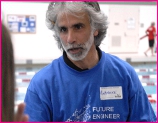 A simulated shipwreck tested students from four Boston-area schools, who, through the MIT Sea Grant/Sea Perch Program, built remotely operated underwater vehicles to check for leaks of hazardous cargo and salvage the wreck.
A simulated shipwreck tested students from four Boston-area schools, who, through the MIT Sea Grant/Sea Perch Program, built remotely operated underwater vehicles to check for leaks of hazardous cargo and salvage the wreck.
Read More
Filed under: Special Features | Comments Off on Feature: Pooling Their Talents
Tags: Building robots, Marine engineering, Robotics, U.S. Navy, Underwater Robot
Posted on July 19th, 2010 by ASEE
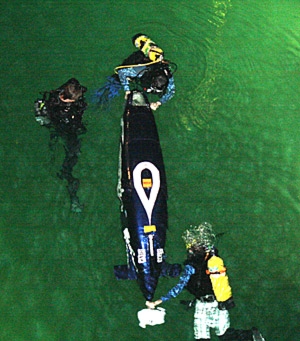 Plans are already underway for the 20011 International Submarine Race, to be held next summer at the Naval Surface Warfare Center’s Carderock test tank facility in Bethesda, Maryland. The race tests the creative skills of young engineering students from schools and colleges throughout the world, as teams compete in one- and two-person “wet” submarines submerged along a 100-meter measured course.
Plans are already underway for the 20011 International Submarine Race, to be held next summer at the Naval Surface Warfare Center’s Carderock test tank facility in Bethesda, Maryland. The race tests the creative skills of young engineering students from schools and colleges throughout the world, as teams compete in one- and two-person “wet” submarines submerged along a 100-meter measured course.
Read More
Filed under: Grades 9-12, K-12 Outreach Programs, Web Resources | Comments Off on Competition: Human-powered Submarine Race
Tags: Competitions for Students, Grades 9-12, Marine engineering, Ocean science, U.S. Navy
Posted on July 19th, 2010 by ASEE
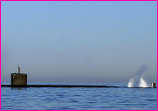 This lesson helps students understand how a submarine controls its buoyancy through the use of ballasts. Students construct a model ballast system, and then learn to control its vent valves to make it submerge and surface.
This lesson helps students understand how a submarine controls its buoyancy through the use of ballasts. Students construct a model ballast system, and then learn to control its vent valves to make it submerge and surface.
Read More
Filed under: Grades 6-8, Grades 9-12, Lesson Plans | 1 Comment »
Tags: Grade 7-12, Lesson Plan, Marine engineering, Nautical Engineering, Ocean, Underwater Robot
Posted on May 10th, 2010 by ASEE
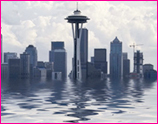
If all burning of fossil fuels were to cease tomorrow, the build-up of greenhouse gases in the Earth’s atmosphere is still severe enough that in 2100, we are still looking at a world at least several degrees warmer than during the pre-industrial era. That warming brings with it certain hazards – droughts, the spread of infectious diseases, the extinction of species. One hazard in particular will require an engineering response: the rise of sea levels.
Read More
Filed under: Special Features | 1 Comment »
Tags: Climate Change, Marine engineering, Ocean, Water management, Water Resources
Posted on May 10th, 2010 by ASEE
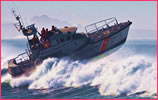 The ocean’s awesome power is never more apparent when the surf’s up or a coastal storm is brewing. But did you know that engineers are busily seeking ways to harness that might as a means for producing alternative sources of energy? Here is an overview of three different projects, compiled from recent news items in ASEE’s Prism magazine.
The ocean’s awesome power is never more apparent when the surf’s up or a coastal storm is brewing. But did you know that engineers are busily seeking ways to harness that might as a means for producing alternative sources of energy? Here is an overview of three different projects, compiled from recent news items in ASEE’s Prism magazine.
Read More
Filed under: Special Features | Comments Off on Feature: Catch the Wave
Tags: Marine engineering, Ocean
 The United States won the 33rd America’s Cup with a design that got a boost from aeronautical engineering. The wing sail of BMW Oracle Racing’s BOR 90 is essentially an oversized airplane wing. At 190 feet tall, it’s the largest sail ever used on a boat.
The United States won the 33rd America’s Cup with a design that got a boost from aeronautical engineering. The wing sail of BMW Oracle Racing’s BOR 90 is essentially an oversized airplane wing. At 190 feet tall, it’s the largest sail ever used on a boat.








 In this activity, students in grades 6 to 8 learn about the engineering design process and the physical principles of buoyancy by working together to build a boat out of straws and plastic wrap that can hold 25 pennies for at least 10 seconds before sinking.
In this activity, students in grades 6 to 8 learn about the engineering design process and the physical principles of buoyancy by working together to build a boat out of straws and plastic wrap that can hold 25 pennies for at least 10 seconds before sinking. Scuba diving is an excellent hobby for underwater naturalists. In this lesson, students in grades 6-8 learn about the concepts of buoyancy and how organisms float, sink, or hover in water as they construct a neutrally buoyant “scuba diver.”
Scuba diving is an excellent hobby for underwater naturalists. In this lesson, students in grades 6-8 learn about the concepts of buoyancy and how organisms float, sink, or hover in water as they construct a neutrally buoyant “scuba diver.” Tech Challenge 2011, sponsored by
Tech Challenge 2011, sponsored by  A simulated shipwreck tested students from four Boston-area schools, who, through the MIT Sea Grant/Sea Perch Program, built remotely operated underwater vehicles to check for leaks of hazardous cargo and salvage the wreck.
A simulated shipwreck tested students from four Boston-area schools, who, through the MIT Sea Grant/Sea Perch Program, built remotely operated underwater vehicles to check for leaks of hazardous cargo and salvage the wreck. Plans are already underway for the 20011 International Submarine Race, to be held next summer at the Naval Surface Warfare Center’s Carderock test tank facility in Bethesda, Maryland. The race tests the creative skills of young engineering students from schools and colleges throughout the world, as teams compete in one- and two-person “wet” submarines submerged along a 100-meter measured course.
Plans are already underway for the 20011 International Submarine Race, to be held next summer at the Naval Surface Warfare Center’s Carderock test tank facility in Bethesda, Maryland. The race tests the creative skills of young engineering students from schools and colleges throughout the world, as teams compete in one- and two-person “wet” submarines submerged along a 100-meter measured course. This lesson helps students understand how a submarine controls its buoyancy through the use of ballasts. Students construct a model ballast system, and then learn to control its vent valves to make it submerge and surface.
This lesson helps students understand how a submarine controls its buoyancy through the use of ballasts. Students construct a model ballast system, and then learn to control its vent valves to make it submerge and surface.
 The ocean’s awesome power is never more apparent when the surf’s up or a coastal storm is brewing. But did you know that engineers are busily seeking ways to harness that might as a means for producing alternative sources of energy? Here is an overview of three different projects, compiled from recent news items in ASEE’s Prism magazine.
The ocean’s awesome power is never more apparent when the surf’s up or a coastal storm is brewing. But did you know that engineers are busily seeking ways to harness that might as a means for producing alternative sources of energy? Here is an overview of three different projects, compiled from recent news items in ASEE’s Prism magazine.